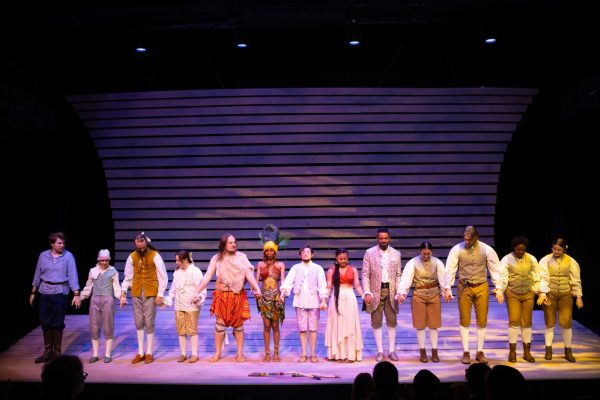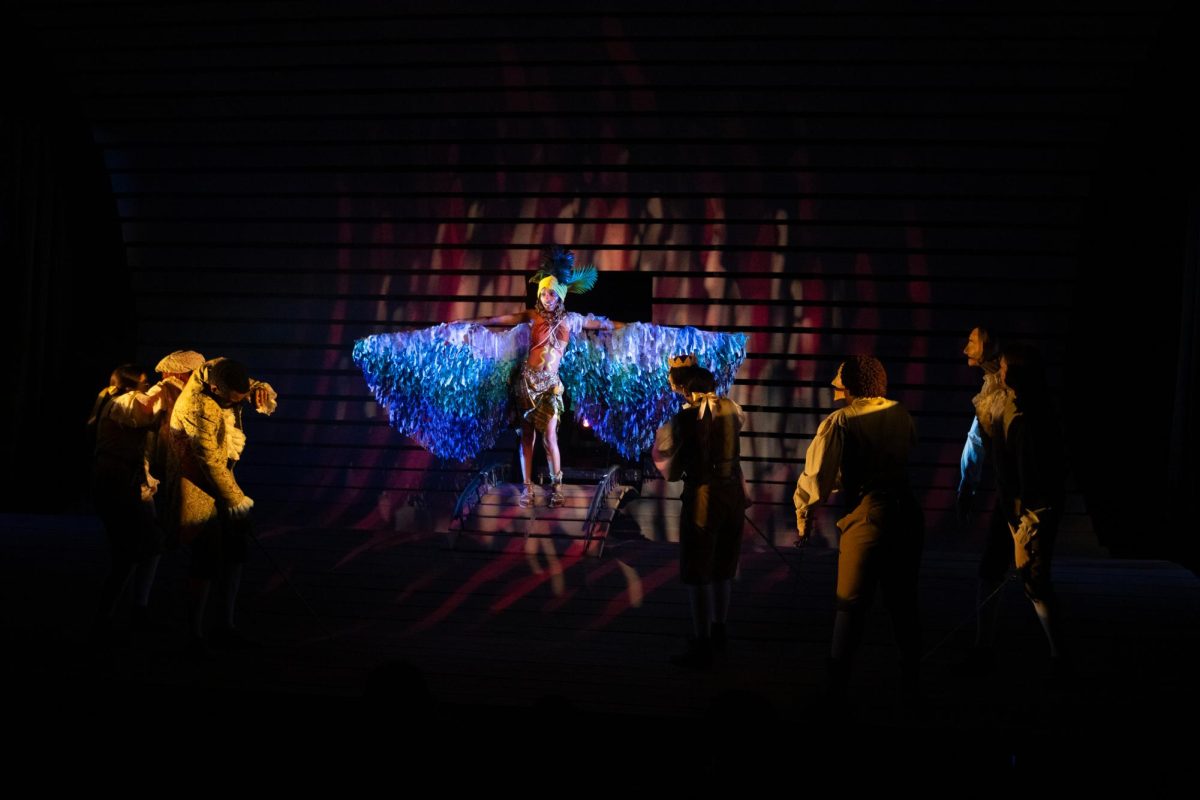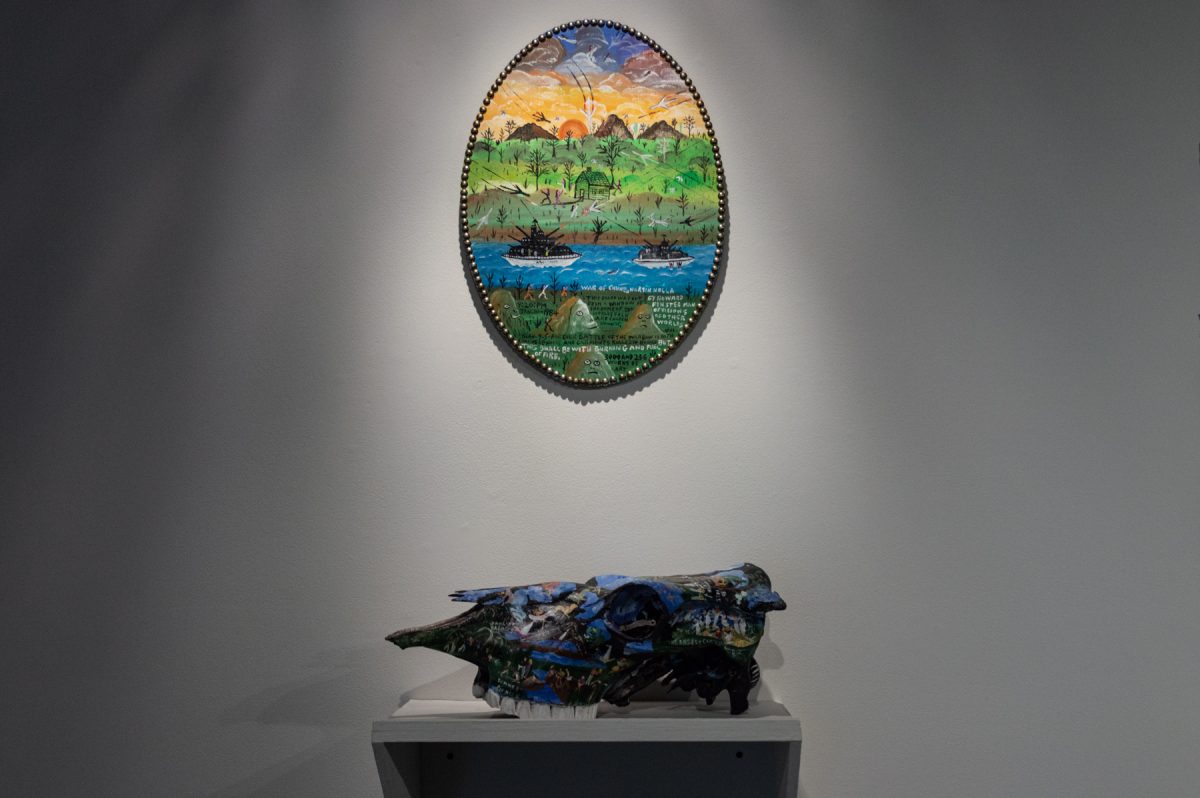ODURep’s production of William Shakespeare’s “The Tempest,” directed by Chris Hanna, opened on Apr. 10. A culmination of a semester’s worth of work and rehearsals, “The Tempest” was an impressive and enjoyable production, and will run until Apr. 20 at the Goode Theatre.
“The Tempest” was the final play Shakespeare ever wrote, and is frequently interpreted as an allegory for his goodbye to playwriting. He tells the story of a powerful sorcerer named Prospero who summons a tempest to strand all of his old enemies on the island on which he was exiled, where he lives with his daughter and several strange creatures. This will be an in-depth review, so there will be spoilers for the show in the following paragraphs.
As audiences filter into the Goode Theatre, they are met with an abstract set designed by Jim Lyden, made up of a series of wooden planks curving upward, like the deck of an overturned ship. The planks also form a hump on stage, which the cast sells as a sand dune through the use of their movement and space work.
“The Tempest” has a cacophonous opening, with the bulk of the cast acting out the titular tempest amid dark projections of waves and lightning. From there, nearly every cast member gets a chance to shine and show their Shakespearean talents. Despite the daunting heightened language that Shakespeare plays often present, the cast members imbued their lines with incredible emotion that got the points of their flowery lines across.

This production of “The Tempest” made use of gender-blind casting, with six male characters being played by female actors; this includes Kenzie Moyers as Ferdinand waxing poetic about the beauty of Miranda (played by Kamis Looney), Kendra Blount as the scheming Sebastian plotting to overthrow the king and Evalee Merritt as the bumbling Trinculo providing laughs with physical comedy.
Perhaps the most captivating performance came from Lakasia Moore as Ariel, Prospero’s magical servant. Moore accentuated her performance with smooth, fluid movements of her body and arms to indicate Ariel’s status as a magical air spirit. Even when she was not speaking, her movements slowed but never stopped, staying true to her acting choice without upstaging the other actors.
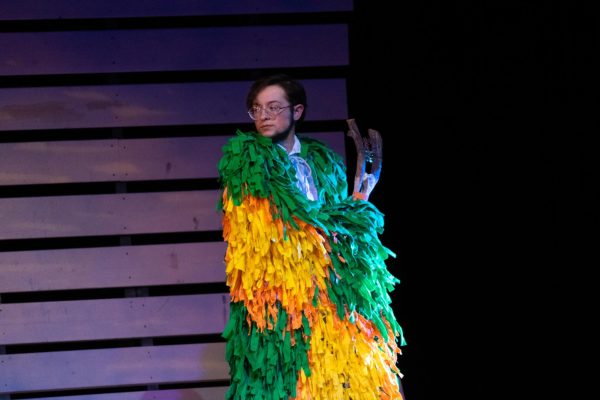
Taylor Tousignant delivered an impressive performance as Prospero, cycling through the character’s powerful and more vulnerable moments, presenting the character as one that can be simultaneously feared and sympathetic.
One of the most surprising and memorable parts of this production of “The Tempest” was its use of puppets. The royal court of Naples, King Alonso, Sebastian, Antonio and Adrian, are portrayed by puppets. Actors Angelina Paquin, Kendra Blount, Ian Turner and Meadow Franklin mounted the puppets on their right arms and brought them to life with their hand and arm movements.

“It is a representation of people who can take power or choose to be in places that are designated with a specific rank or position, essentially, they are choosing to become puppets of a given system,” said Thomas Salerno, who worked as the show’s puppet director.
Salerno also highlighted the small timeframe that the actors had to learn puppetry.
“I have to say that the majority of the credit goes to them, if not all of it […] I think the audience won’t know that they haven’t been doing this for weeks and months,” he said.
Turner, who played Prospero’s scheming brother Antonio, highlighted some of the challenges of first-time puppeteering.
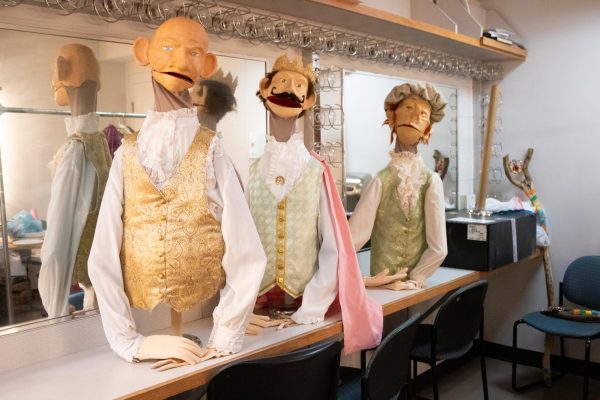
“My concept of puppets in the past would be something like Sesame Street or the Muppets, and usually you can’t see the operator,” Turner said. “And I think for me, [a challenge] was communicating what is in my body to show up through the puppet.”
Turner stated that he had to get creative in how he emoted with the puppet, comparing it to silent film acting, where one has to overact to communicate the emotion.
The puppets were designed by Jessica Gaffney and created by Margaret Cheney, with the help of student Sean Kirkpatrick. Kirkpatrick created Prospero’s puppet himself.
Though the actors did well with the puppets in such a short time, there is one drawback of their use in the production. The puppets’ features are so over exaggerated that it is difficult to view them outside of a comedic lens. Because of this, Prospero gaining a puppet to symbolize his return to royalty has garnered laughs from the audience as his puppet is suddenly lowered to the set.
The costume design of the show is notable and captivating in its endeavor to enhance the world of the play. Costume designer Jessica Gaffney dressed the Neapolitan nobles in courtly finery, and dressed the inhabitants of the island with more natural looking materials, such as Ariel’s crown of ferns and Miranda’s skirt, which resembles sail cloth. Prospero’s costume in particular is memorable, mixing the rumpled finery of the Naples court with rope sandals and a mantle made of multicolored strips of fabric that resemble leaves, connecting him both to the royal court he used to be a part of, and the island he has lived on for twelve years.
The lighting and sound design (by Woody Robinson and Shyloh Bailey respectively) enhanced the magic of the play. Prospero and Ariel’s various spells were shown with music and sound effects, as well as creative lighting. “The Tempest” also made use of projections designed by Sam Flint to represent visions conjured by the spellcasters and even set the scenes of the storms and various parts of the island.
Overall, ODURep’s production of “The Tempest” is a fantastic and enchanting experience, and a testament to the wellspring of talent and hard work fostered at ODURep.
